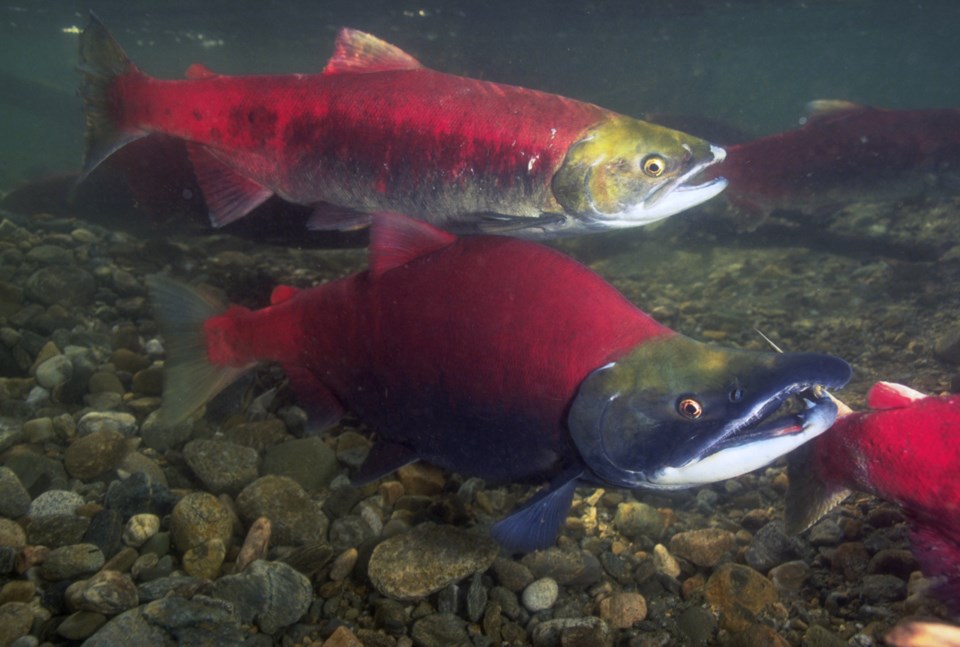A new study of Alaskan sockeye salmon over long time scale shows a correlation between pink salmon abundance and sockeye paucity, adding to the debate over the wisdom of artificially boosting pink salmon through hatcheries.
In published in the ICES Journal of Marine Sciences, Pete Rand, an ecologist at the Prince William Sound Science Center, and Greg Ruggerone of Natural Resources Consultants, examined 25,000 Alaskan sockeye salmon scales, which showed “a clear pattern of reduced growth in odd years in the North Pacific since 1977.”
The findings of the study have implications for all sockeye, including Fraser River sockeye, Rand told BIV News.
Whereas sockeye generally live four years, pink salmon live for only two years, and the odd and even year pink salmon are distinct populations. Odd-year pink salmon tend to be twice as abundant as even-year pinks.
Pink and sockeye salmon have similar diets, and it has been suspected that pink salmon have been out-competing sockeye for food, which may explain the smaller sizes for sockeye in odd years.
Pink salmon are the most abundant of the five species of Pacific salmon, and appear to be better adapted to warming oceans and rivers. In other words, they may be more successful at adapting climate change than other species.
But they also get an artificial boost from hatcheries. Every year, hatcheries in Alaska, Russia, Japan and sa国际传媒 release about 5 billion hatchery salmon, about 1 billion of which are pink salmon, according to data from the North Pacific Anadromous Fish Commission (NPAFC).
“Hatcheries are also contributing to this effect,” Rand said. “If you look across the North Pacific, most of these pinks are wild. But about 15 per cent of them are hatchery origin. Then, in the Gulf of Alaska, hatchery salmon represents about 43 per cent of the total pinks.”
Rand and Ruggerone found that Alaskan sockeye size and abundance show a clear sawtooth pattern over time going back to 1977.
The study found eight populations of sockeye salmon in Alaska grew an average of 17 per cent less while at sea in odd years, when competition at sea is more intense. Sockeye that enter the ocean in an odd year and return two years later tend to be smaller when they return to spawn.
Rand pointed to previous studies that suggested pink salmon abundance has had an impact on Fraser River sockeye abundance and size. Rand said the latest study reinforces that theory.
“Clearly pink salmon are having a negative effect on productivity of Fraser sockeye,” Rand said.
